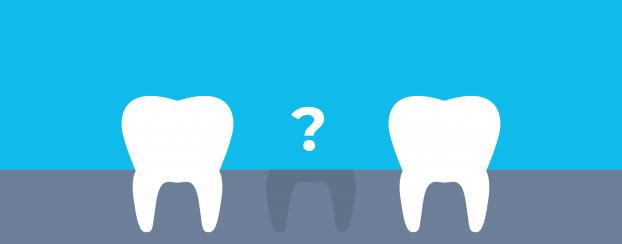
Whether you’ve fallen off your bike, caught a puck with your teeth or absorbed a ball with your face; accidents happen all the time. Accidentally losing a tooth is no joke, but the most important thing you can do in these situations is to think clearly and work quickly. Here’s what to do to address dental trauma when it happens:
STEP 1: CHECK ON THE PATIENT AND ADDRESS THE DAMAGE
Stop what you’re doing and check on the patient. Try your best to keep them calm while you address the injury. Crying and laboured breathing will only increase the blood flow, making it harder to see injury which can slow down the whole process. Make sure to stop the bleeding and get them to relax before moving onto the next step.
STEP 2: FIND THE TOOTH
If you’re able to, ask someone to find the lost tooth while you check on its owner. Be sure to pick it up by the crown (chewing surface) rather than the root. Give it a quick rinse if it’s dirty, but avoid scrubbing or touching the root so as not to disturb the vulnerable cells.
Next, replace the tooth in the patient’s mouth and cover it with gauze. Get them to bite down or use their finger to keep it in place, being sure to keep the tooth moist at all times. If the patient is in too much pain or simply can’t do this, place the tooth in a saline solution, a glass of milk, or a container of saliva. Avoid storing it in water as this could damage the root cells.
STEP 3: GET PROFESSIONAL HELP
Once the tooth has been secured, make your way to the closest dental clinic. If you’ve done everything right and secured the tooth correctly, they could be able to reimplant and secure the tooth by a splint or temporary braces.
STEP 4: TAKE IT EASY
This part is crucial. Avoid participating in high-intensity activities that elevate the heart rate, such as contact sports, running, or dancing. This is to avoid disturbing the tooth with excessive bleeding which could derail the healing process.
This isn’t limited to activities, though. To ensure that the tooth heals properly, you may be asked to go on a soft food diet for at least two weeks, use a soft-bristle toothbrush after each meal and rinse your mouth with chlorhexidine twice a day for one week. You’ll also be encouraged to schedule a follow-up visit with your dentist to ensure that everything is healing the way it should.
Dental trauma can be stressful but, if handled correctly, everything will be just fine. We’ve got faith that you’ll do great! If you’ve got questions or concerns, please don’t hesitate to reach out to the Palladium Dental team.
